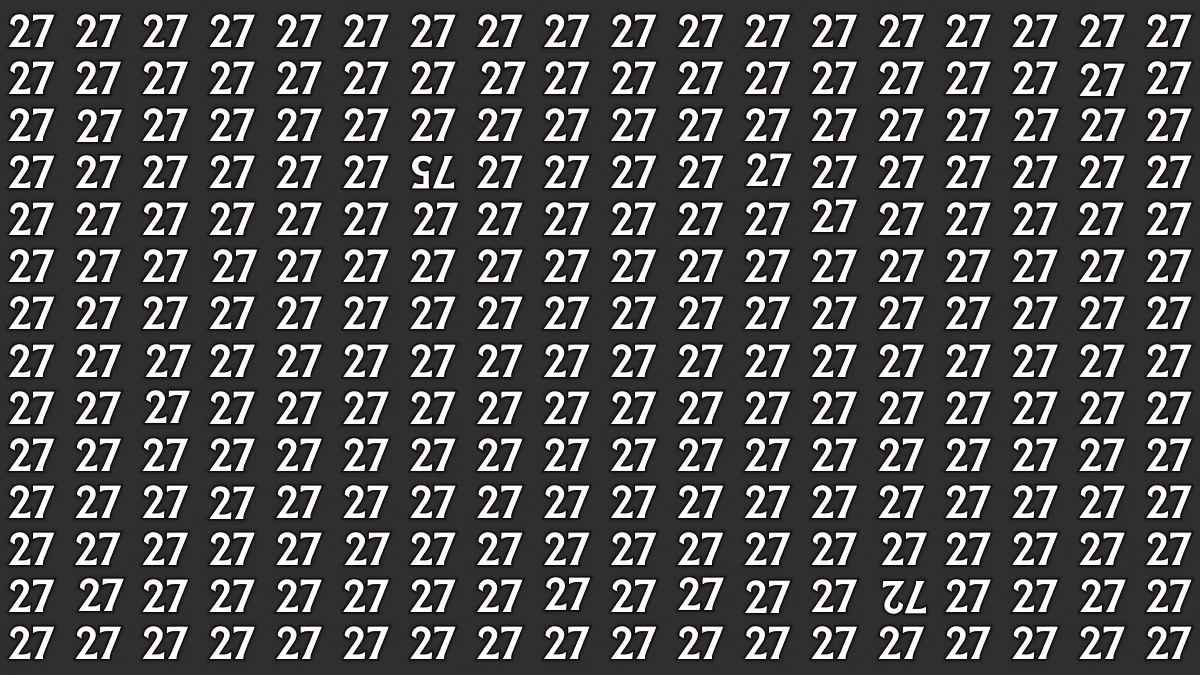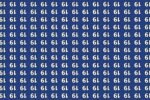Optical illusions have fascinated human beings for centuries, allowing us to explore the limits of our perception. They reveal how the brain interprets the world around us, often leading us to see things that aren’t there or perceive something entirely different than what is actually present. One such optical illusion challenge involves spotting the numbers 72 and 75 among a field of 27s. It might seem like a simple task at first, but as you engage with it, you will realize just how tricky it can be. The phenomenon behind this challenge is rooted in our brain’s tendency to make assumptions based on patterns and familiarity.
In this article, we’ll dive into the details of this optical illusion and share tips on how you can spot the inverted 72 and 75 among the repeated 27s. Whether you’re just interested in optical illusions or want to sharpen your observation skills, this is a fun and enlightening exercise. Let’s get started!
Understanding the Nature of the Optical Illusion
At its core, an optical illusion occurs when there is a mismatch between the physical reality and the way your brain interprets that reality. The illusion in question revolves around numbers—specifically the numbers 72, 75, and 27. On the surface, these are just simple digits, but when arranged in a particular sequence, the mind can get tricked into overlooking certain numbers.
The challenge here is that the numbers 72 and 75 are inverted versions of the number 27. This subtle inversion is the key to the illusion. Our brain expects patterns and often seeks symmetry or repetition. In this case, the presence of so many 27s in the field makes the inverted versions (72 and 75) appear like they don’t belong. However, with a little focus and strategy, you can train your brain to detect these outliers.
The Power of Patterns
One of the key reasons optical illusions like this work is because our brains are wired to recognize patterns. From an early age, we are trained to identify patterns in our environment as a survival mechanism. This is why we can often spot faces in clouds or recognize familiar shapes even when they’re partially obscured. Our brains love repetition because it allows us to make quick judgments, often without conscious thought.
In the case of the 27s, the repetition of the number is so frequent that your brain begins to filter out anything that looks similar but doesn’t exactly match the pattern. This is why when you try to spot the numbers 72 or 75 among the 27s, they may appear to be camouflaged, even though they are present. Your brain is looking for the familiar “27” and may dismiss any other digits as irrelevant or out of place, even if they are right in front of you.
Breaking Down the Visual Challenge
Now that we understand how our brains tend to filter out unfamiliar elements in a pattern, let’s look at the visual composition of the challenge. In this optical illusion, there is a grid or field filled primarily with the number 27, repeated over and over again. But hidden among these 27s are the inverted numbers 72 and 75.
The numbers 72 and 75 are typically flipped or mirrored versions of the number 27. This inversion can be hard to detect because our brains are conditioned to quickly scan for familiar shapes and symbols. The number 27 is fairly common, so when you focus on it for too long, you might start to ignore subtle differences like flipped digits.
What makes this challenge especially tricky is that the numbers 72 and 75 might not be perfectly aligned within the grid. Their positions could be scattered across different parts of the field, sometimes blending with the other 27s. This makes them harder to spot because your mind is searching for something that fits within the regular pattern of 27.
Tips for Spotting the Inverted Numbers
So, how do you go about finding the inverted numbers in such a challenging optical illusion? Here are some tips that might help you enhance your observational skills:
- Focus on the Edges
The inverted numbers may appear on the edges of the grid or at irregular intervals. If you scan the center of the field first, you may miss them. Begin by examining the outer edges, where the numbers might be less likely to fit within the repeating pattern of 27. - Change Your Viewing Angle
Sometimes, the way you view the illusion can make a huge difference. If you stare at the image from one perspective for too long, your brain will start filtering out the subtle differences. Try adjusting your focus or viewing angle. A fresh perspective can help you spot the outliers. - Look for Inconsistencies in Spacing
Often, optical illusions like this will have slight variations in spacing between the numbers. If you see a number that’s slightly off-center or positioned differently than the others, it could be an inverted 72 or 75. Pay attention to any inconsistencies in how the numbers are arranged. - Zoom In
If the illusion is presented in a large format, zoom in to focus on smaller sections of the grid. This can help you pick out the inverted numbers that might be hard to spot in the full image. Once you identify one, you may find it easier to spot others in the vicinity. - Use Color Contrast
In some variations of this optical illusion, colors or shading are used to highlight certain numbers. If you’re working with an image that includes color or shade differences, focus on areas where the contrast between numbers might be greater. An inverted number could stand out due to its slight deviation in shading or hue. - Practice Patience
It’s easy to get frustrated when you can’t spot the inverted numbers right away. Optical illusions often require patience and perseverance. Take your time, and remember that you’re training your brain to see beyond the obvious. The more you practice, the better you’ll get at spotting these subtle differences.
The Psychology Behind the Illusion
What makes this challenge so intriguing is the psychology behind it. Our brains are wired to favor speed over accuracy when scanning the environment. When confronted with a grid of numbers like 27s, we quickly assume that every number will be the same, and this assumption can prevent us from spotting differences.
The phenomenon behind this illusion can also be tied to the concept of “cognitive bias.” Our brains tend to simplify complex visual information by grouping similar objects together. In this case, all the 27s are grouped together, and our minds may overlook the inverted numbers because they don’t fit the established pattern. This bias toward pattern recognition is what makes this challenge so fun and difficult at the same time.
The Takeaway
Spotting the inverted 72 and 75 among the 27s is more than just an optical illusion—it’s a fascinating exercise in how our brains perceive and process visual information. By practicing mindfulness and sharpening your observation skills, you can train your brain to become more aware of subtle details that might otherwise be missed.
While this specific challenge might seem like a simple game, it’s an excellent way to improve your cognitive flexibility and attention to detail. Optical illusions like this one remind us that perception isn’t always what it seems, and sometimes what we see is a result of how our brains interpret patterns and information.
So the next time you come across an optical illusion, remember to keep an open mind, adjust your perspective, and be patient with yourself. You might just be amazed by what you can discover!





Niece
Nice